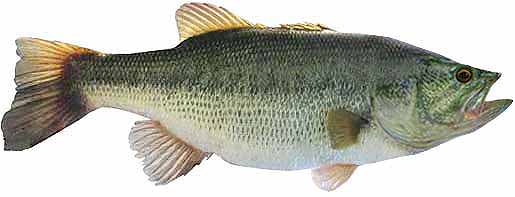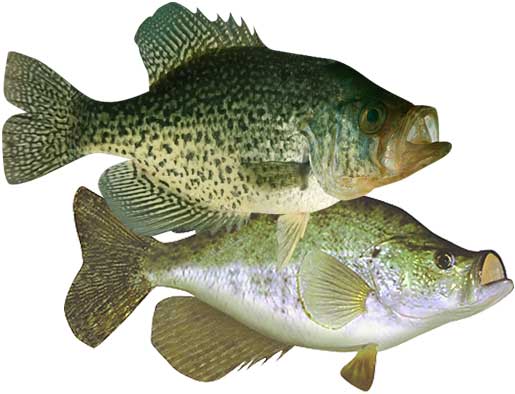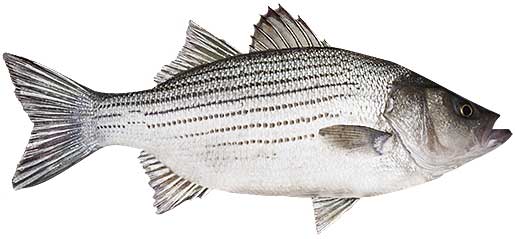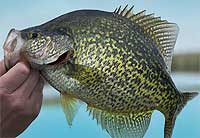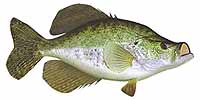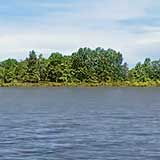Fishing Report For Thomas Hill Reservoir, MO
By Rick Seaman
July 26, 2025
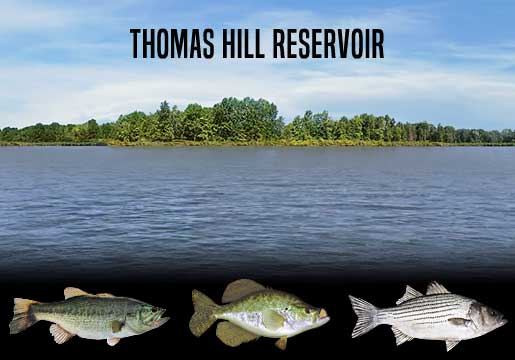
Fishing Reports
Popular Fish Species Thomas Hill Reservoir, MO
Largemouth Bass
Current Report: Good
SUMMER. Bass are feeding shallow early and late in the day, where they are being caught on topwater, crankbaits and swimbaits. Wacky-rigged stick worms are catching finicky bass when the bite is slow. The current water temperatures are in the 80's, and largemouth bass are feeding on gizzard shad, small sunfish and crawfish. During summer bass are caught deeper, on points, channel edges, and ledges 20 to 30 feet deep. Jigs and worms are popular when fishing this deeper structure. The best reports seem to be from anglers fishing around points and creek channels at the mouths of creeks.
FALL. As Fall arrives, bass here will follow schools of baitfish into coves and shallow bays, where spoons, swimbaits, and slow-rolled spinnerbaits have been successful in prior years.
WINTER. Winter will isolate them around slightly deeper structure, flats, points and creek channels. They can be found from 20 to 30 feet deep. Here they hold, feeding less frequently, awaiting warmer water to return in Spring.
SPRING. Once water temperatures rise into the low 60's, largemouth will move from deep wintering spots to shallower water just outside spawning areas. Jerkbaits, spinnerbaits and vibrating jigs typically get bites just off the shoreline. At this time they are starting to focus on the spawn. Once water warms into the mid to high 60's, they will move into 1 to 4 feet of water, and create nests, then lay their eggs. Immediately afterwards, females move to deeper water and males remain to guard the eggs, and then the fry. After a couple weeks, the males also move to slightly deeper water. Crankbaits, vibrating jigs, plastic worms and swimbaits are catching bass during this period.
Black & White Crappie
Current Report: Good To Very Good
Both black crappie and white crappie reside here with white crappie the more popular species.
SUMMER. Water temperatures are currently in the 80's, and crappie fishing has been quite good. Now that the spawn is over, and the hot Summer sun is warming the shallows, most crappie have retreated to depths of 10 to 15 feet, or embedded in the shade of heavy vegetation in shallower water. During summer crappie fishermen concentrate on submerged brush piles, trees and vegetation scattered around the lake. Anglers are also locating schools of crappie hanging above rocky structures and around creek channel edges.
FALL. Baitfish, which will be moving into shallow flats, coves and bays, will draw crappie into these areas, where they are feeding heavily in preparation for the cold Winter. Small spoons, along with minnows and crappie jigs, are good options during this feeding marathon.
WINTER. Once the shallows start cooling rapidly, crappie will migrate to deeper holding areas, mostly off shore. At this time they are typically caught using a very slow presentation, in 15 to 25 feet of water. Even though they are typically not on the bottom, they are usually relating to some cover, or structure change, directly below them.
SPRING. In early Spring, crappie begin staging in 8 to 10 feet of water, just outside spawning bays and shallow flats. Spring is prime time to be on the water, as crappie have moved shallow to spawn. At that time, they are typically caught in 2 to 4 feet of water. Docks, brush, wood and vegetation are where most anglers are catching good numbers using small crappie jigs or live minnows. After the spawn, crappie move outside the spawning area and hold on the closest cover. Once they move off the beds, anglers are reporting good success using fish finders and forward facing sonar to locate schools of crappie, which tend to stack vertically around cover. Light tackle with 4 lb to 8 lb line is a popular choice.
Hybrid Striped Bass
Current Report: Good To Very Good
SUMMER. In Summer, these wipers typically hang out in 10 to 15 feet of water, staying close to schools of bait. Sometimes, during the heat of the day, they may move close to the bottom, 25 to 30 feet deep or deeper. Morning often draws hybrid stripers to much shallower water, so look for them around the 10 to 12-foot range as they feed on shallow, roaming schools of shad. Being successful at fishing for wipers in Summer is a matter of locating schools of bait, and the wolf packs of wipers are likely to be nearby. Fish finders, and sonar electronics, are a big help in locating these roaming schools. Nice wipers are being caught by casting, trolling or drift fishing. Spoons, blade baits, crankbaits, live bait and cut bait are all effective here.
FALL. In Fall, hybrid stripers return to the upper end of the lake, into inflowing water. Look for deeper sections in the upper river channels, and fish them thoroughly with lures that imitate baitfish.
WINTER. In Winter, hybrid stripers again hang out in deeper water and feed close to the bottom, often 25 to 30 feet deep. Warm afternoons occasionally draw stripers shallower, so look for them around the 15-foot range as they feed on roaming schools of gizzard shad. In Winter it is important to locate schools of bait, then look for wipers schooling nearby the bait. Fish finders, and forward facing sonar, are a big help in locating these roaming schools. Nice fish are being caught while trolling or drift fishing. Spoons, swimbaits, blade baits, crankbaits, live bait and cut bait are typically effective this time of year. Due to slower metabolism, anglers are triggering more strikes by making slower presentations.
SPRING. Water temperatures are in the mid 60's now, and that's ideal for the hybrid stripers to spawn. The state record is over 20 pounds. T to 10 pound wipers are relatively common, and many anglers believe there are bigger ones to be caught. In Spring, work the upper end of the lake anywhere there is inflowing water. If they spawn, this is where they will lay eggs in shallow gravel or sand, in flowing water. Look for deeper holes in the river channels, as they are a good holding place for stripers.
Fishing Video
Fish species to fish for...
Guide to fishing for largemouth bass, channel catfish, flathead catfish, black crappie, white crappie and hybrid striped bass at Thomas Hill Reservoir in Missouri.
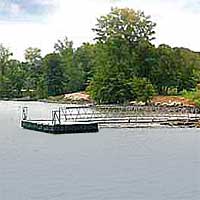
Thomas Hill Reservoir is a 4,500-acre lake with over 53 miles of shoreline. Warm-water discharge from the power plant improves winter fishing. Bass, catfish, black and white crappie, and hybrid striped bass all thrive well in the lake. Fishing from the bank is available from a jetty at the north end of the lake.
Primary fish species to catch
Click images for fishing tips and details about each species.
Today's Weather & Forecast
Public Boat Launch Ramps & Landings
Click here for boat ramps.
Fishing License
Click here for a Missouri Fishing License.
Map - Fishing & Access
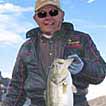
Rick Seaman is a fishing enthusiast with over five decades of fishing experience, a retired tournament fisherman, author of numerous published articles on fishing, and co-author of the book "Bass Fishing - It's not WHAT you throw, It's WHERE you throw it".
Contact Information
Thomas Hill Reservoir
Conservation Commission of Missouri
660 785-2420
Fishing lakes in each state
072625
Thomas Hill Reservoir, MO Report
MISSOURI


Information about fishing lakes in MO.
Thomas Hill Lake offers great wintertime fishing for bass, hybrids, catfish and crappie.


